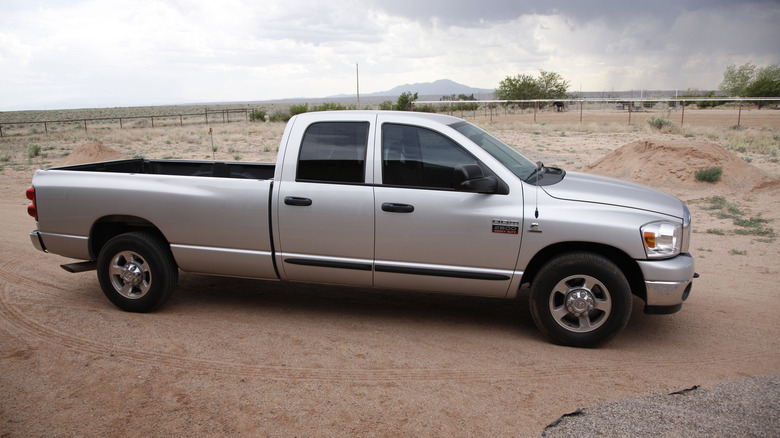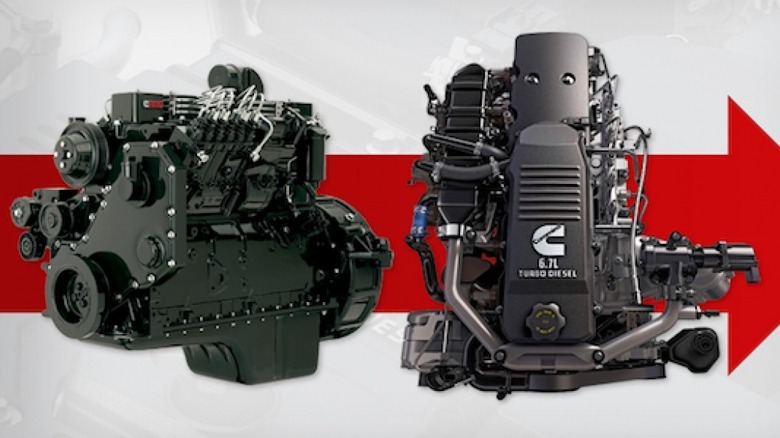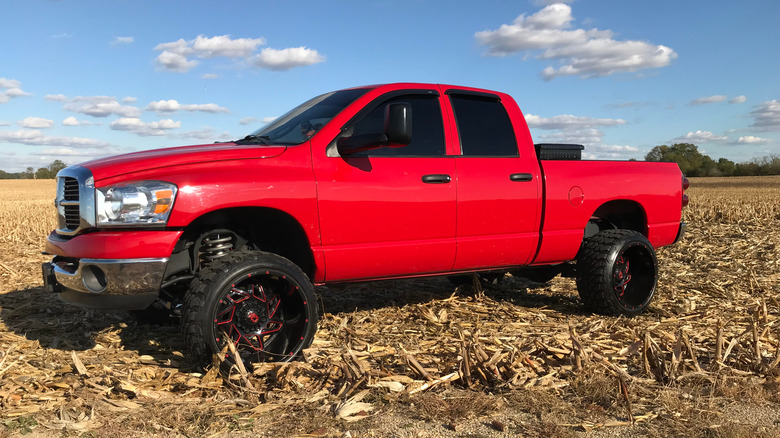Cummins 6.7 Vs. Cummins 5.9: Which Is The Better Diesel?
The Cummins diesel engine has long carved its name into industrial equipment, agricultural machines, and the heavy-duty truck market. Dodge trucks started using the Cummins 5.9-liter B-Series inline-six diesel lump in 1989. It has since undergone multiple iterations to improve the engine's low-end torque, fuel economy, and long-term durability. Cummins added improvements like common-rail direct injection, upgraded Bosch fuel pumps, new turbochargers, and a 24-valve valvetrain to the second and third-generation 5.9-liter B-Series.
Dodge Ram pickups from the later part of 2007 came with the all-new 6.7-liter Cummins diesel, a worthy predecessor to the aging 5.9-liter. Right off the bat, it came with more power and torque than the smaller-displacement 5.9-liter unit, but each motor has pros and cons. Answering which is better is like figuring out if the hen or egg came first. For starters, the newer Cummins 6.7-liter shares many of its components with the 5.9-liter, making the two engines nearly identical from an engineering perspective.
What are the differences between a Cummins 5.9 and 6.7 diesel?
Nearly 40% of the earlier Cummins 5.9-liter components made it to the new 6.7-liter diesel. Both featured common-rail direct injection, but the 5.9 has a Holset HE351CW fixed geometry turbocharger. On the other hand, the 6.7-liter Cummins diesel has a Holset HE351VE variable geometry turbo to produce more power while motivating the truck's exhaust brake function. Unique to Ram trucks with the Cummins 6.7-liter diesel, the "turbo brake" fortifies the stopping power and prevents excessive brake wear, which is excellent when towing heavy loads.
The Cummins 5.9-liter made up to 325 horsepower and 610 lb-ft of torque, but the fixed geometry turbo means dealing with the inevitable turbo lag. Meanwhile, the Cummins 6.7-liter diesel has a variable geometry turbocharger (VGT) to produce up to 385 horsepower and 900 lb-ft of torque. But despite offering better responsiveness and more low-end torque, the VGT is prone to carbon buildup and sticky nozzles, issues that could affect the modern diesel's emission components like the EGR (exhaust gas recirculation) valve and the diesel particulate filter (DPF).
Is the Cummins 5.9-liter better than the 6.7?
The Cummins 5.9-liter's basic construction makes it more reliable and with fewer reported problems than the 6.7-liter diesel. It also sips less diesel since it has fewer emissions components. However, it makes less power and has a more noticeable turbo lag than the 6.7 despite having a sterling reputation for durability and reliability. But then again, the 6.7-liter is far from perfect. The higher boost pressures make it susceptible to head gasket failure, and the VGT turbocharger is not the last word on durability despite its uncanny responsiveness to the throttle.
Overall, it's hard to go wrong with either Cummins diesel engine. The 5.9-liter mill became an instant hit with Ram customers since debuting in 1989, and the newer 6.7-liter Cummins diesel has its share of fans and believers. Moreover, the 6.7-liter requires more maintenance than the 5.9, but the extra care is worth it for the added horsepower and torque.


